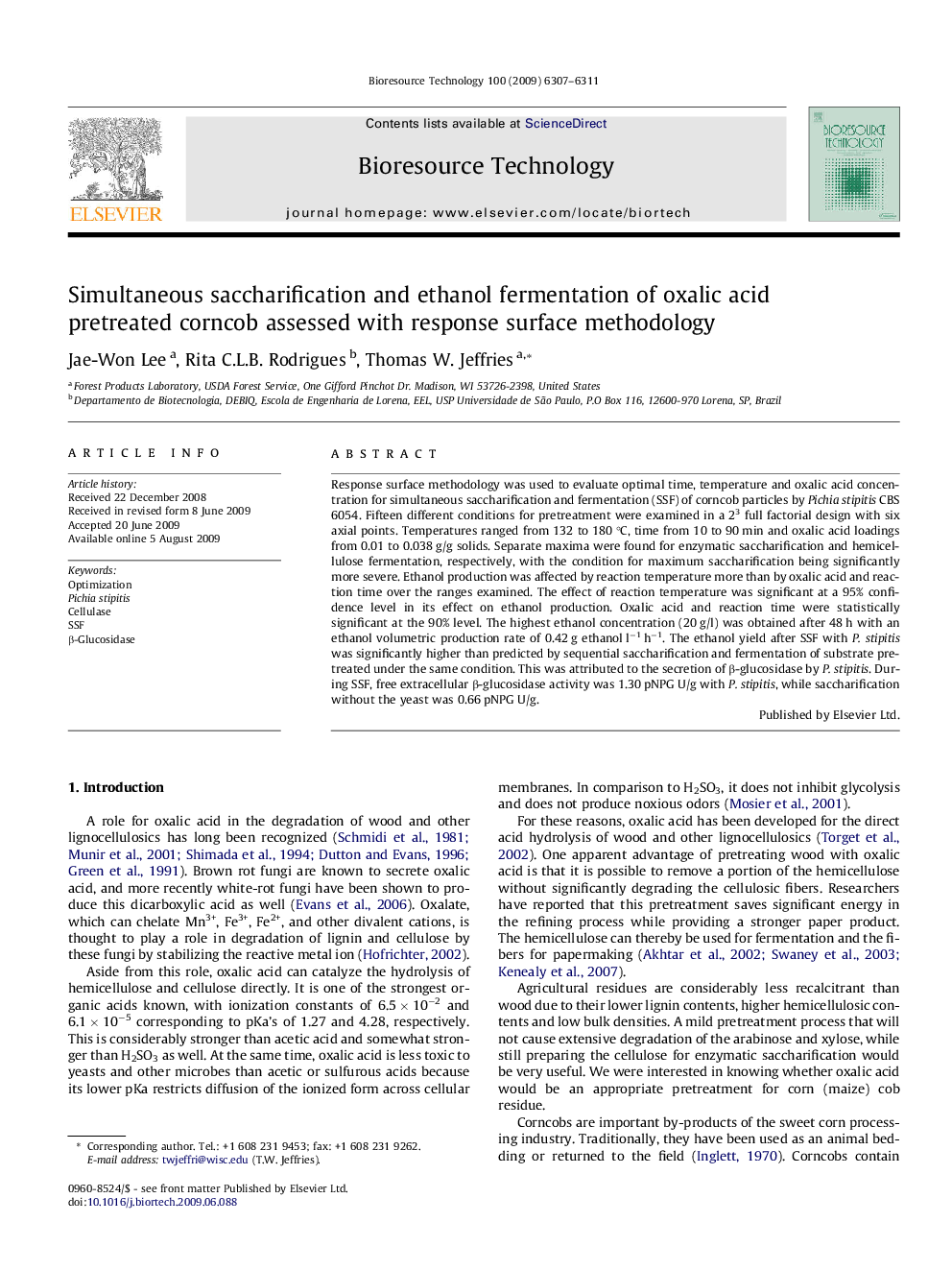| Article ID | Journal | Published Year | Pages | File Type |
|---|---|---|---|---|
| 683431 | Bioresource Technology | 2009 | 5 Pages |
Response surface methodology was used to evaluate optimal time, temperature and oxalic acid concentration for simultaneous saccharification and fermentation (SSF) of corncob particles by Pichia stipitis CBS 6054. Fifteen different conditions for pretreatment were examined in a 23 full factorial design with six axial points. Temperatures ranged from 132 to 180 °C, time from 10 to 90 min and oxalic acid loadings from 0.01 to 0.038 g/g solids. Separate maxima were found for enzymatic saccharification and hemicellulose fermentation, respectively, with the condition for maximum saccharification being significantly more severe. Ethanol production was affected by reaction temperature more than by oxalic acid and reaction time over the ranges examined. The effect of reaction temperature was significant at a 95% confidence level in its effect on ethanol production. Oxalic acid and reaction time were statistically significant at the 90% level. The highest ethanol concentration (20 g/l) was obtained after 48 h with an ethanol volumetric production rate of 0.42 g ethanol l−1 h−1. The ethanol yield after SSF with P. stipitis was significantly higher than predicted by sequential saccharification and fermentation of substrate pretreated under the same condition. This was attributed to the secretion of β-glucosidase by P. stipitis. During SSF, free extracellular β-glucosidase activity was 1.30 pNPG U/g with P. stipitis, while saccharification without the yeast was 0.66 pNPG U/g.
